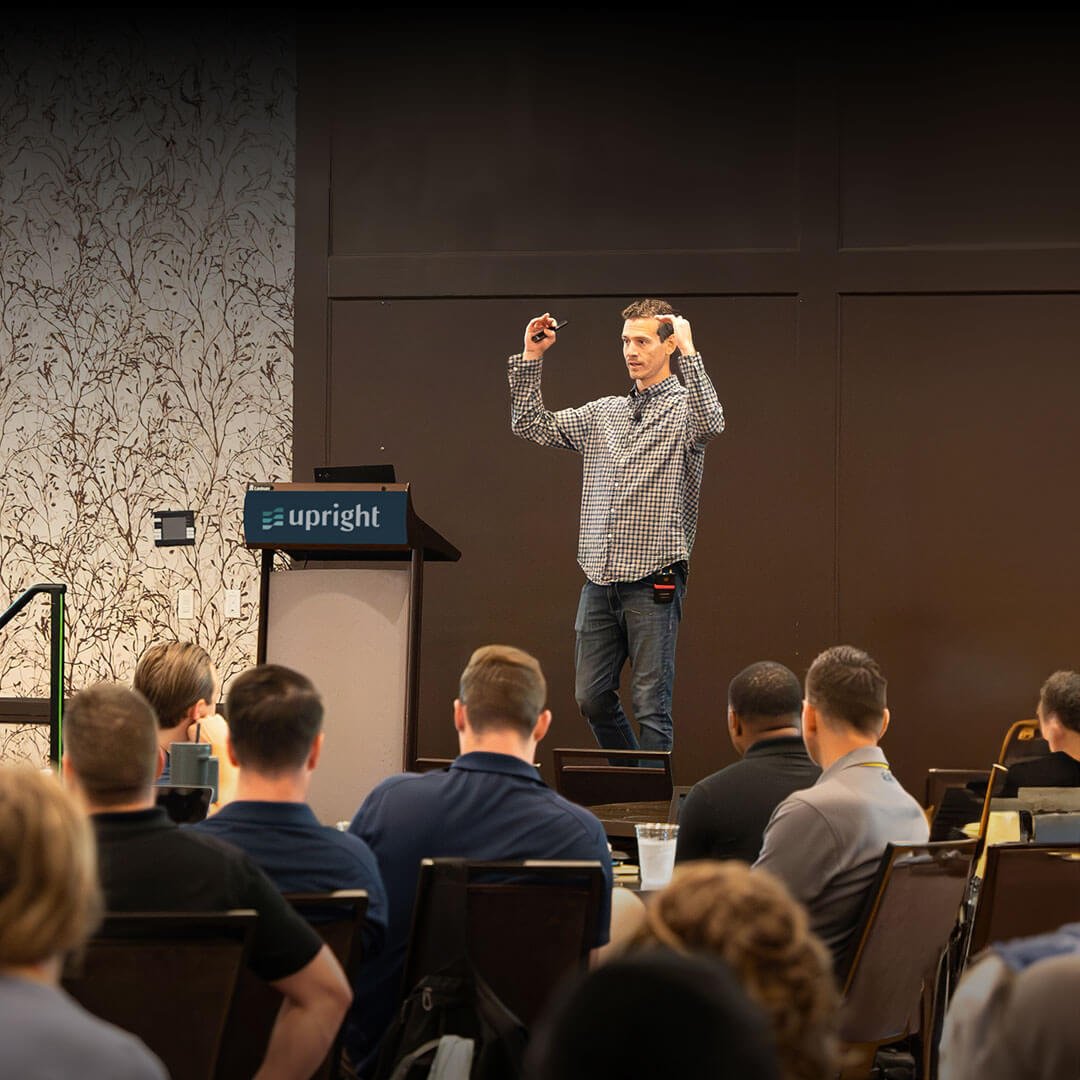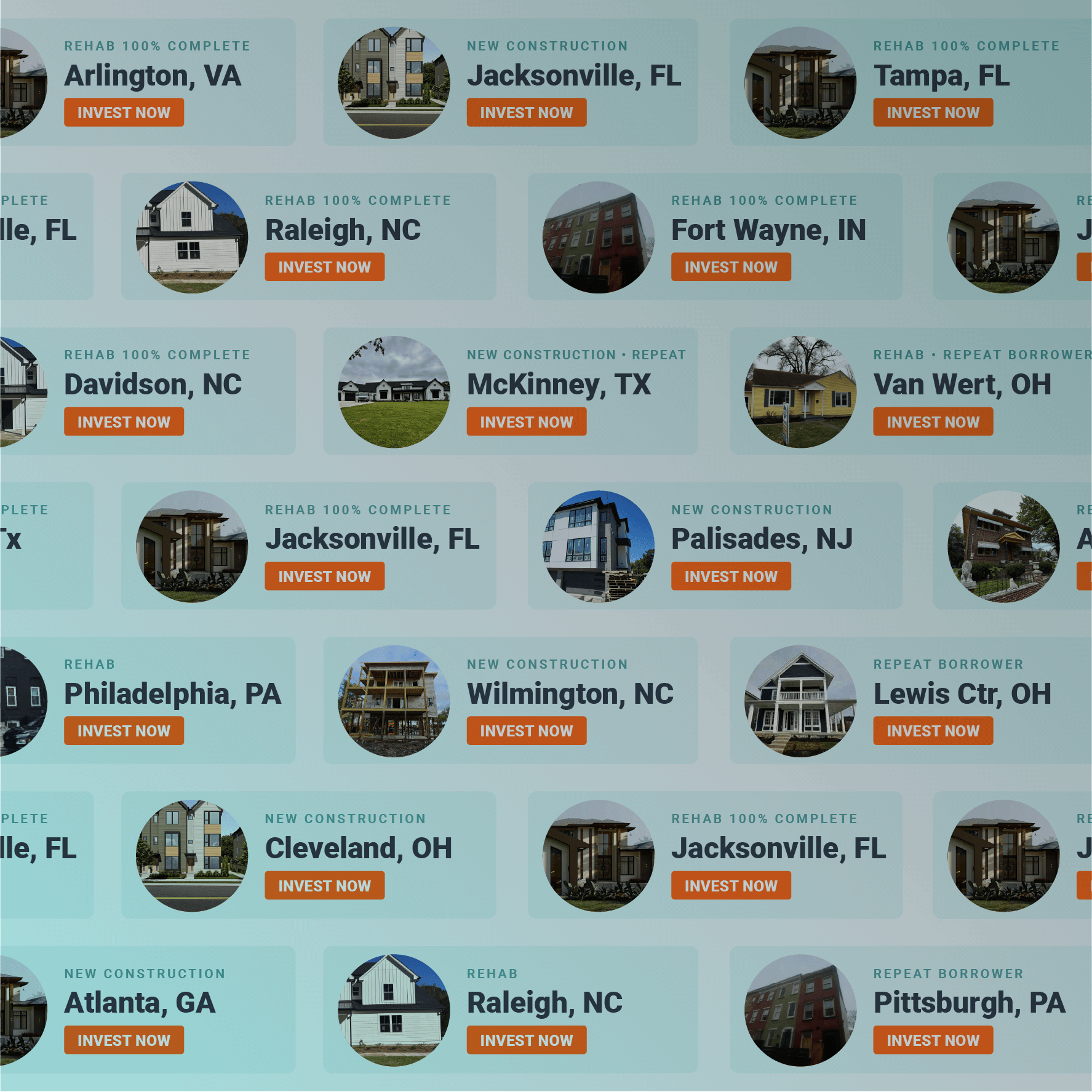Welcome to the first part of our 12-Step Guide to Investing in Real Estate Online with Fund That Flip. Whether you're a seasoned investor or just getting started building your real estate portfolio, we've compiled vital information to help you every step of the way.
What is Crowdfunded Real Estate Investing?Let’s go back to 2012 when Congress passed and President Obama signed new legislation called Jumpstart Our Business Startups — or the JOBS Act. The goal of the new law was to reduce red tape for startup companies who needed to raise capital to grow their businesses, including real estate developers. This allowed the rise of crowdfunded and peer-to-peer investing.

Since then, crowdsourced real estate has changed the game for both passive and active real estate investors, allowing for consolidated deal flows, lower minimum investment entry points, and offering much more transparency into the process. Lenders get access to invest in high-yield loans with a lower minimum investment entry point and can generate income from the interest. At the same time, real estate developers (Borrowers) now have better access to reliable and quick capital to fund their deals, which means they can scale and grow their businesses.
Crowdfunded real estate also allows both passive and active investors better opportunities to invest in their communities. Many passive Fund That Flip investors choose to fund deals in their neighborhoods, cities, or states, and many active real estate investors are dedicated to revitalizing homes in the areas they live, which brings value to the community and jobs to local contractors and businesses.
What’s the Difference Between Passive and Active Real Estate Investing?
Passive real estate investing is what our Lenders do: they invest money into an asset with the expectation of generating income. It’s the traditional definition of an investment. The Lender’s time is not required to manage or operate that real estate asset. The asset (like a distressed home) is backed by a note and a first-position lien.
On the flip side, active real estate investing, or what our Borrowers do, means investing both equity and time into an asset to generate income, such as being a landlord or rehabbing a home. Active real estate investors are responsible for any of the following: sourcing properties for acquisition, getting financing, overseeing construction and contractor teams, and/or managing tenants.
 Passive real estate investing differs from active real estate investing in that it doesn’t require the investor's time to operate or manage the asset.
Passive real estate investing differs from active real estate investing in that it doesn’t require the investor's time to operate or manage the asset.
Types of Active Real Estate Investors
There are multiple classifications of active real estate investors (Borrowers) you should be aware of if you’re interested in passive real estate investing. For simplicity, we’ll look at four broad descriptions we use at Fund That Flip: the newbie, the part-timer, the full-timer, and the high-volume investor.
Newbies are our new active investors with little-to-no industry-related experience. Typically, newbie active real estate investors are riskier when it comes to executing their projects simply because they have less experience.
Part-timers are active real estate entrepreneurs who use house-flipping as a side hustle, and it’s not their main source of income. Part-timers have often been contractors or work in real estate in some capacity as their 9-to-5 career, but they do house-flipping or rehabbing projects of their own occasionally when they find a good investment opportunity.
Many active real estate investors are considered full-timers, which means this is their main source of income. Full-timers have a legitimate, established business with full-time employees and a network of contractors and teams they often work with, and they typically execute similar types of projects.
High-volume investors’ businesses operate on an even larger scale than full-timers, with repeatable systems and processes, more employees and contractor teams, and more sources for capital — all of which allows them to find and execute more deals, faster.
Types of Active Real Estate Investment Deals
Any classification or level of investor can be involved in any type of active real estate investing. Possibly the most popular and well-known type of active real estate investment is the fix-and-flip. A fix-and-flip is when a developer acquires a piece of real estate with an existing dwelling on it with the intention of rehabilitating the home to increase its market value before the developer eventually sells it for a profit. A fix-and-flip can be a smaller, cosmetic rehab or a larger, full-gut rehab.
 A fix-and-flip is when a developer acquires a piece of real estate with an existing dwelling on it with the intention of rehabbing the home and increasing its market value before they eventually sell it for a profit.
A fix-and-flip is when a developer acquires a piece of real estate with an existing dwelling on it with the intention of rehabbing the home and increasing its market value before they eventually sell it for a profit.
In order to get fix-and-flips complete, investors need funding via fix-and-flip loans. Fix-and-flip loans are typically short-term loans (three to 18 months) that include acquisition and construction components to them (i.e., for a $200,000 total loan amount: $100,000 sent out at loan closing, and $100,000 held back for construction reimbursement). Some loans may even have interest escrow wrapped into the loan amount.
Another type of active real estate investing is wholesaling. Sometimes the borrower never takes ownership of the asset, but instead, simply assigns the contract to someone else. There are other cases where a borrower may close on a property with the intention of doing little or no work to it (clean up) and then sell it to another investor at a higher price than they paid.
The third type of active real estate investing is fix-to-rent. This method is similar to fix-and-flip, but upon completion of the rehab, the developer rents the property to tenants instead of selling it. Some borrowers will buy a property with the intention of renting it and refinancing it into a long-term debt product so they can grow their portfolio of cash-flowing assets. Other borrowers may rent a property to then sell the cash-flowing asset to another investor who is trying to grow their portfolio. Sometimes developers set up property management companies and when they sell their tenanted property to another investor, the developer agrees to remain on as the property manager for a monthly/annual fee. These same strategies also apply to the build-to-rent method.
Build-to-rent is when a developer acquires a piece of property with the intention of constructing a new home on it, therefore increasing the market value (and market rent) before tenanting the property to hold long term for monthly income and cash flow. This is also applicable to vacant lots and lots with existing dwellings (knock-down-rebuild).
Lastly, the build-to-sell method or active real estate investing is when a developer acquires a piece of real estate with the intention of constructing a new home on it, before eventually selling the property and new home for a profit. Just like in the build-to-rent method, this is also applicable to vacant lots and lots with existing dwellings (knock-down-rebuild).
Now that you have a better understanding of the pieces and parts of active real estate investing, learn how these properties become investment opportunities for passive real estate investors and how you can get involved.
Learn more in the next article:
Ready to start your investing journey? Create an account for free and browse open opportunities:
Disclaimer: Projects funded and principal repaid are reflective of Fund That Flip's overall platform performance and are not necessarily indicative of the returns of any specific investment product offered.
Past performance is not indicative of future performance. Investors should not rely on forward-looking statements because such statements are inherently uncertain and involve risks. No returns are guaranteed and these types of investments involve a high degree of risk.
Neither the Securities and Exchange Commission nor any federal or state securities commission or any other regulatory authority has recommended or approved of the investment or the accuracy or inaccuracy of any of the information or materials provided by or through the website. Direct and indirect purchase of real estate property involves significant risks, including, but not limited to risk related to sale of land, market and industry risks and risks specific to a given property. Investments are not bank deposits, are not insured by the FDIC or by any other Federal Government Agency, are not guaranteed by Fund That Flip, Inc., and may lose value.
Fund That Flip, Inc. does not make investment recommendations, and this message should not be construed as such. This message is not an offer to sell or the solicitation of an offer to buy any security, which can only be made through official offering documents that contain important information about risks, fees and expenses. Any investment information contained herein has been secured from sources Fund That Flip, Inc. believes are reliable, but we make no representations or warranties as to the accuracy of such information and accept no liability therefor. We recommend that you consult with a financial advisor, attorney, accountant, and any other professional that can help you to understand and assess the risks associated with any investment opportunity. If and when Fund That Flip, Inc. is able to make investment opportunities available, only accredited investors who submit required verification will be able to invest.






